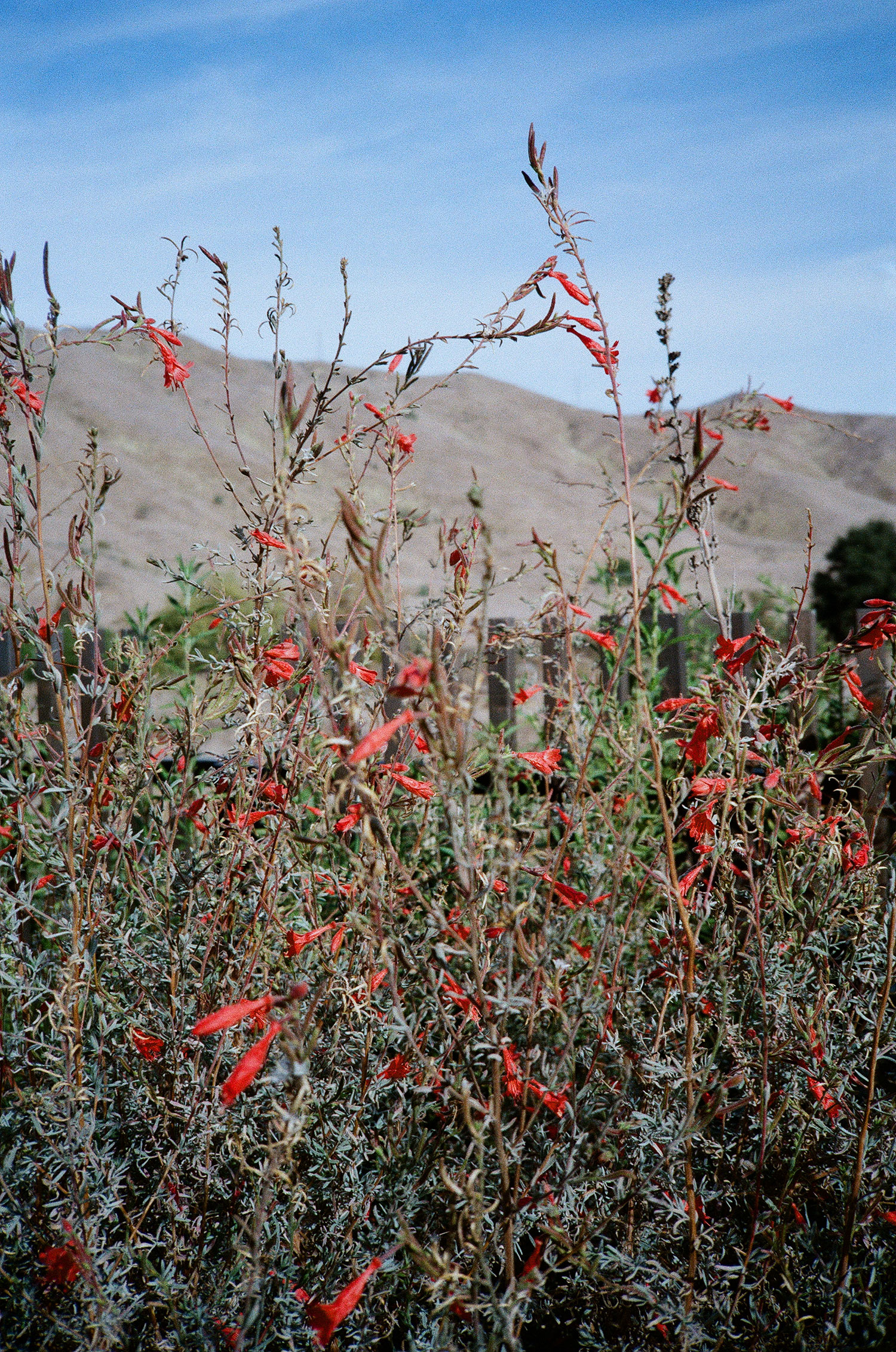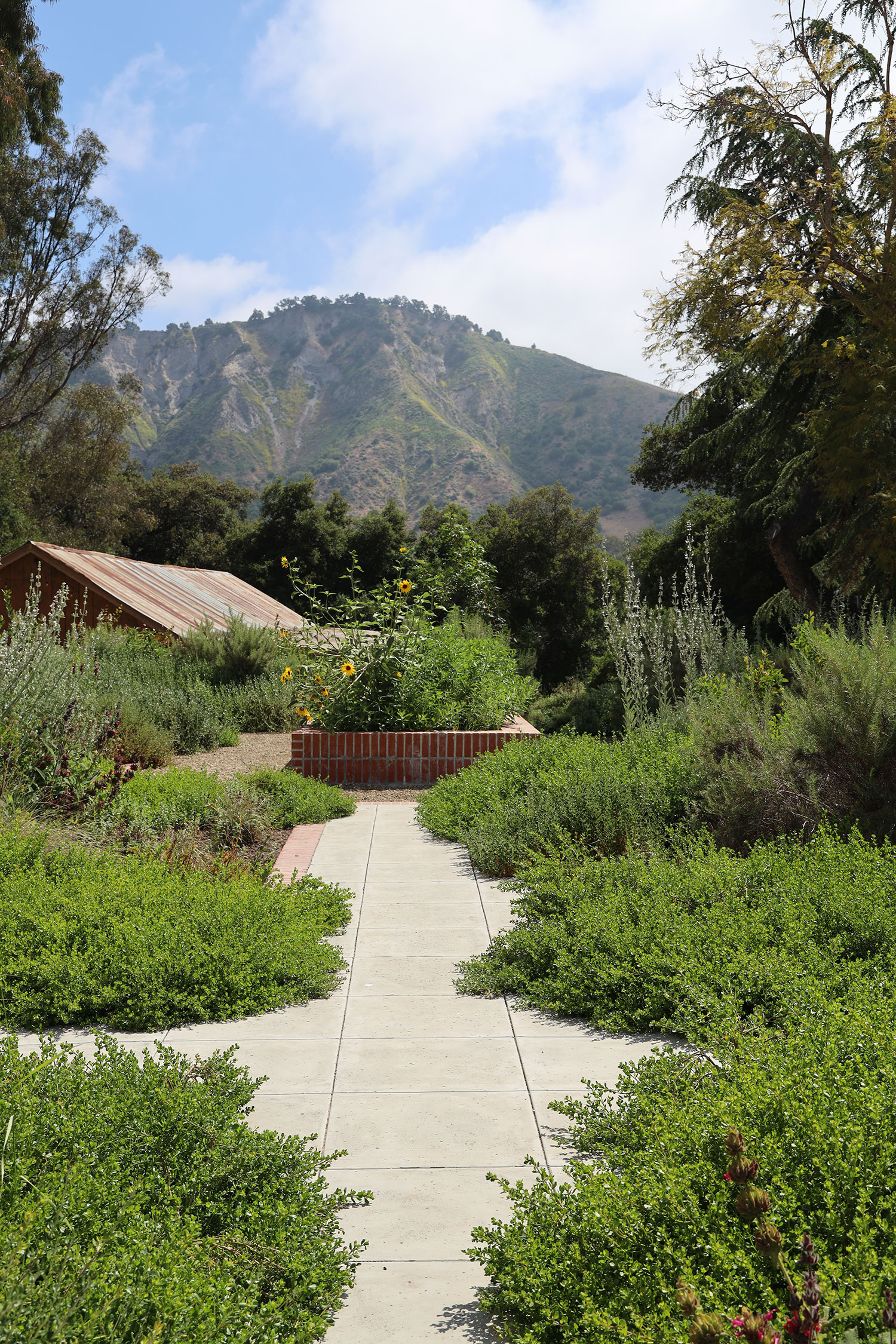As summer scorches on, the garden becomes more than a pretty backdrop—it’s a lifeline. In drought-prone corners of the West, pollinators and small creatures struggle to find shade, water, and food. But with just a few smart, zone-friendly moves, your yard can become a cool, supportive refuge for wildlife when the critters need it most.
That’s where landscape designer Morgan Ramirez steps in. As the founder of Morami Studio—a California-based landscape design firm rooted in ecological stewardship—Ramirez creates gardens that give back. Her research-driven approach focuses on regionally specific plant communities, material reuse, and mimicking the natural rhythms of surrounding ecosystems. The result? Residential and commercial spaces that not only withstand the heat, but actively support local wildlife through it.
This season, her expert strategies will help you transform even the most heat-stroked habitat into a thriving, resilient oasis.
Morgan Ramirez / Morami
1. Using Canopy, Shrubs, and Groundcover to Cool Your Garden and Its Guests
When it comes to creating a heat-resilient garden, shade is everything—not just for people, but for pollinators, birds, and beneficial insects, too. “Layered planting—from trees to shrubs, to perennials and grasses—creates a garden with year-long shade, reduces water evaporation, and mimics the biodiversity of your region,” suggests Ramirez.
She recommends starting with keystone natives that pull double duty as shelter and food sources. Coast Live Oak (Quercus agrifolia), for example, supports over 275 species of moths and butterflies and even helps buffer homes from wildfire by catching and holding embers. For faster-growing options, she suggests California Lilac (Ceanothus spp.) layered with Toyon (Heteromeles arbutifolia): “I’ve seen one-gallon Ceanothus grow eight to ten feet in a year. It’s evergreen, supports 120 species, and blooms beautifully in early spring—just be sure to avoid summer watering.” For beginners, her advice is simple: start with one native at a time and build from there.

Morgan Ramirez / Morami
2. Keep the Water Coming—But Do It Smart
Even the smallest water source can make a big impact during peak summer heat—for both wildlife and your own garden enjoyment. “Providing any source of water in the garden is a gift to wildlife, and your viewing pleasure,” says Ramirez. Whether it’s a shaded birdbath, a shallow tray with stones, or a custom water feature made from on-site materials, she encourages thinking creatively and sustainably. “We’ve made wildlife ponds and fountains from found boulders—I always prefer repurposing what’s already available rather than purchasing something new,” she says.
To keep water clean and safe, circulation is key. “If your fountain doesn’t recirculate, solar-powered bubblers work well and can be placed directly into the basin,” she says. Wildlife will quickly come to rely on any consistent water source, so it’s important to maintain it—especially in the heat. Ramirez recommends placing fountains in the shade to minimize evaporation and notes that water-wise design goes hand in hand with native planting: “Ultimately, we’re conserving water by planting California natives. They support wildlife and reduce the need for irrigation overall.”

Morgan Ramirez / Morami
3. Feed Late-Season Pollinators with the Right Plants
Just when summer gardens start to wind down, late-season pollinators are still hard at work—and hungry. Keeping the nectar flowing into fall is key to supporting native bees, butterflies, and hummingbirds through the hottest, driest months. “I love keystone species, and Eriogonum fasciculatum‚ California buckwheat—is one of my go-tos,” says Ramirez. Its bloom time stretches from spring through late fall, with flowers shifting from white to pink to rusty rose, providing continuous food and beauty. Another seasonal standout? “Epilobium canum, our California fuchsia, starts its vibrant coral bloom in summer and carries it into fall,” Ramirez says.
You don’t need a sprawling yard to make a difference. “Plant in pots, experiment with different specimens and pot sizes,” she suggests. Even tucking a native plant into a vegetable bed or adding a bird feeder can extend support to passing wildlife. At Morami, planting palettes are often built by observing what grows together in the wild. “Those combinations—naturally occurring and regionally specific—become our guide. Mimicking our region in the garden is creating habitat,” she adds.

Morgan Ramirez / Morami
4. Skip the Clean Sweep
In the rush to tidy up a garden, we often erase the very things wildlife needs most. “Leave the leaf litter,” encourages Ramirez. “Even if you can’t leave it all—some trees drop a lot—keeping some on the ground provides crucial nutrients, nesting material for birds, and shelter for insects.” That organic debris isn’t just clutter—it’s a vital layer in a thriving ecosystem, especially during the hottest months when animals seek refuge near the soil.
A wildlife-supporting garden doesn’t have to look wild. “We spend a lot of time defining the lines, crisp paths, clean hardscapes, so that planting can be loose and expressive,” Ramirez explains. Whether it’s structured beds with soft native grasses or sculptural shrubs surrounded by natural groundcover, balance is the key. And if your garden turns golden in summer? That’s not neglect, it’s nature’s rhythm. “The garden doesn’t need to be green,” she says. “In California, dormancy happens in summer. It’s a seasonal shift—not a sign that something’s wrong.”

Morgan Ramirez / Morami
5. Time Your Watering and Work Wisely
When it comes to summer garden care, timing is everything. “One of my toxic traits is texting clients before a heat event and reminding them to water before—not during—the heat,” admits Ramirez. A deep soak ahead of a heatwave helps plants stay hydrated when it matters most. Midday watering, on the other hand, leads to quick evaporation and can stress both plants and wildlife.
You might also notice fewer pollinator visits or signs of fatigue in your feathered or fluttering guests—an indicator that your garden needs more support. “Frail, fatigued wildlife and fewer visits are signs it’s time to add more habitat and water,” suggests Ramirez. To make your landscape more climate-resilient long-term, she suggests incorporating passive water-saving features like bioswales to slow and capture rainwater. And don’t underestimate the power of a watering can: “I’m a big fan of hand-watering the California native garden—it allows for more observation and connection.”

Morgan Ramirez / Morami
6. Rethink What ‘Dead’ Means
In a well-tended habitat garden, not everything needs to be freshly pruned or picture-perfect. That bare branch or spent flower stalk? It could be a crucial perch or nesting site. She suggests deadwood makes for a gorgeous perch, “We’ve used wood scraps as handrails, door levers, even fencing—it’s all about seeing the material for what it can become.”
Ramirez also points to canopy, especially native tree canopy, as one of the most overlooked yet essential elements for summer habitat. “Include as many native trees as you can into your planting designs,” she advises. Not only do they offer shade and food, but their structure, even when partially decayed, supports wildlife in unexpected ways.
Letting go of perfection doesn’t mean letting go of care. It means tending with intention—observing, adjusting, and making room for life to flourish. One native plant, one shaded perch, one saucer of water at a time, your summer garden can be a refuge in more ways than one.


